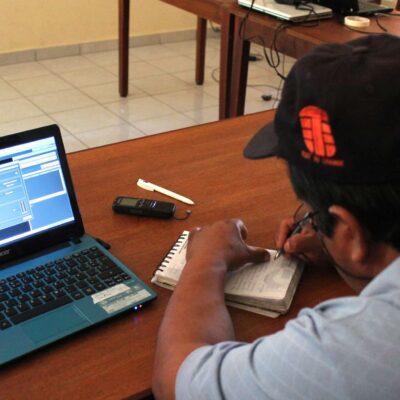Information Needs Assessments (INAs) are standard assessments conducted, when possible, at the beginning of a humanitarian project to inform project design and activities. INAs aim to understand the information needs of the affected population; how they source, exchange and use information; their trust mechanisms and proxies; and their preferred methods of communication. Originally developed in collaboration with the CDAC Network, Internews has been testing these assessments in countries around the world for over 10 years. They have been used to to advocate for a comprehensive communication needs assessment to be conducted in every new emergency.
This process was created for humanitarian situations where people have an urgent need of very specific kinds of information to do with finding food, water, shelter, medical care or family members. INAs focus on those who consume information, not those who produce it. For this reason, our questionnaires begin by asking people where they get their information, and whether they have access to a cellphone, radio or TV, electricity etc. These questions give us insight into the best channels through which to push needed information.
INAs are designed to be done quickly and to identify where information gaps exist, as well as to recommend the best ways that aid agencies and humanitarian communications staff (like Internews) can communicate with people immediately.
In many situations, Internews might turn to the local media to begin an INA, as local media tends to be a widespread and trusted channel through which the local population gets information. However, in humanitarian conflicts and crises, the local media may not present or able to help. Radio stations may be damaged or abandoned, people may have lost access to their radios, or in the case of refugees or IDPs, the local media might not be in the language spoken by those in need of the information. Such cases expand the possibility of using other channels for distributing information, such as making direct announcements, handing out leaflets or sending SMSs to the beneficiary populations.
The way we decide which channels may work best, is to start by asking the people themselves. Using this simple approach allows us to work with and support other agents, in addition to local media outlets, that people might find useful. INAs put the information and communication preferences, habits, and needs of the affected population at the forefront of the response, and, as such, allow humanitarian organizations to respond in a data-driven and contextually-relevant way for optimum impact.
INAs can also be conducted in collaboration with other organizations if possible, or as part of the inter-cluster Initial Rapid Needs Assessment (IRNA), if applicable, when conducted by OCHA.
Additional relevant links:
- Common Needs Assessment Tools
- Questionnaires for Use with Affected Population
- Humanitarian Responders
- Media Station Profile guide




